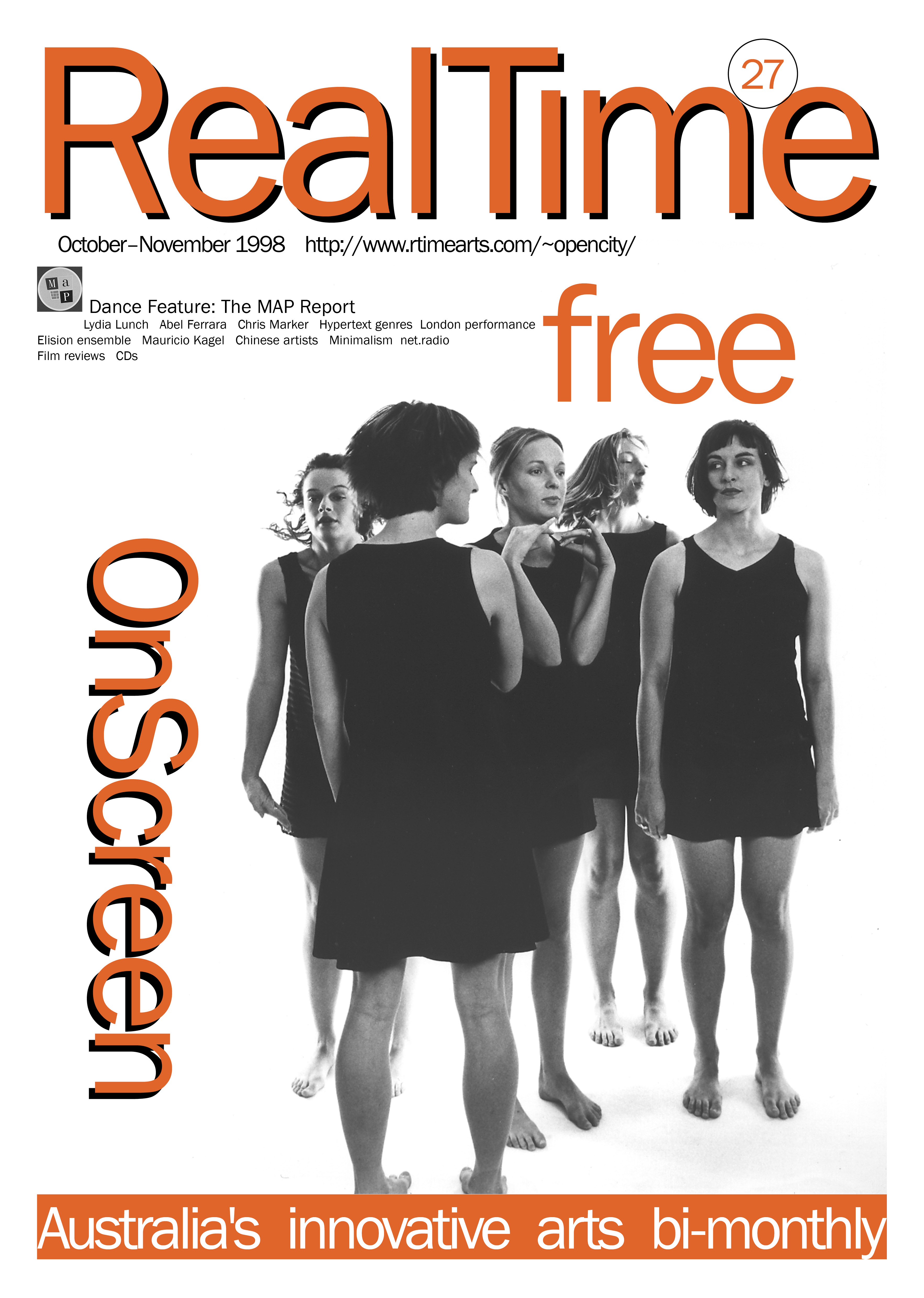
The rise of desktop radio
During May of this year I attended the first international symposium on net.radio, Berlin net.radio days 98 on behalf of Adelaide based net.radio station r a d i o q u a l i a.
Due to recent developments in free software technology it is now possible to broadcast (‘stream’) audio and video material live over the internet from your home computer. net.radio is “desktop radio”; another triumph of software environments over arcane technologies. About 60 participants were brought together for 5 days of lectures and discussions on this exciting new field.
There are few intersections of purpose within the net.radio community. Its members are largely pioneers drawn together through a passion and fascination for exploring this exciting new medium. Hence the practice of net.radio is enduring a mildly uncomfortable adolescence, asking questions about the identity and purpose of the medium. There does seem, however, to be a very clear idea of what net.radio is not. It isn’t web radio, the practice of retransmitting commercial radio stations on the internet, and it is not simply net.art.
While the debate about exactly what makes net.radio distinct from these 2 disciplines is largely unresolved, it is possible to use 4 broad categories to describe net.radio. There are those such as Pararadio in Hungary and Backspace Radio in London, that utilise net.radio to contribute to inner city youth communities. Others such as Berlin-based Convex TV are ‘alternative’ radio practitioners, that value net.radio as an important distribution channel for their interviews and music. There are the radio.art and net.art practitioners who are drawn to net.radio because it is yet another opportunity the internet has provided to utilise new technology in broadcast art (Kunstradio and Radio Ozone). Then there are those who use net.radio (mostly where oppressive governments reside) to open channels for the expression of important political or counter cultural perspectives (B92).
In addition to live audio, it is also possible to add live video to internet broadcasts. There have been some forums such as the 1998 Art on the Net Awards that examine this practice, however most internet broadcasters confine their broadcasts to audio. Although free software such as RealVideo make it easy to broadcast video on the internet, the time and cost involved to produce the content is often prohibitive.
There were about 15 presentations over the 3 days in Berlin with lectures covering a broad range of topics including digital broadcasting, midi audio technologies, net.radio collaborations, historical perspectives on broadcasting, and streaming media software. I found all these presentations interesting but some were only obliquely relevant to the practice of net.radio. However some talks were wholly captivating.
My favourite was an extraordinary speech by Convex TV’s Martin Conrads on the intersection of net.radio and pop-culture, delving into many radio icons within popular literature. Included was Isaac Asimov’s Harmoniums, a story about birds which feed on radiowaves. This story led to a beautiful quote from Conrad that has given me much to muse on—“radio does not have to have content.” An interesting panacea to the belief that all broadcasting should be strictly about content.
There were also some astonishing live performances, one of them by XLR. They mixed live digital music, commentary, and additional nuances provided by the limitations of streaming media technology, together with audio provided live from Canada, Latvia and London. The experience of being immersed within this broadcast was incredible. If you add a beautifully clear Berlin summer night, 60 people who only wanted to talk radio, and cold beer on the banks of the canal, you can understand why it was hard to come back to Adelaide!
The conference also provided the opportunity for many debates including a public forum at the end of the last day. However, as with any conference, it was after the scheduled events that the really interesting discussions occurred. From these informal talks I feel my practice has been wholly altered. The most important consequence is that I now consider net.radio as an important broadcasting innovation. It has opened the door for many to experience the thrill of broadcasting and add an alternative voice to mainstream radio and television. While net.radio is still in its infancy it is rapidly maturing and I believe it is only a matter of time until it is an ingredient in many people’s daily media diets. Berlin net.radio days 98, though not a triumph of modern organisational practice, was one of the most efficacious and interesting symposiums I have attended.
–
The writer’s attendance at Berlin net.radio days 98 was sponsored by ANAT and ARTSA and assisted by the Media Resource Centre (Adelaide) and Virtual Artists. The Conference was held on June 10 – 15, in various venues in Berlin.
Adam Hyde is an online conference manager, web developer and artist in New Zealand where he managed several radio stations and established Australasia’s first free-to-air community television station. He recently moved to Adelaide to work as a business development manager for Virtual Artists, and to investigate online broadcasting.
–
RealTime 27, October – November 1998, p42






